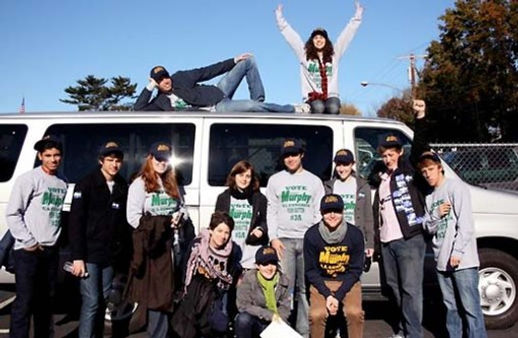Winning the Election: Swing States
- Kiev son
- Oct 26, 2012
- 2 min read
Posted by: Janine Balekdjian, Consular Intern
No, swing states have nothing to do with dance; they have everything to do with the presidential election. In the election for president, unlike elections for any other government position, votes are not allocated by popular vote, but rather by the Electoral College. In the Electoral College, every state has a certain number of electoral votes based on population, and those votes are given to the presidential candidate who wins the popular vote in that state (see last week’s blog post).
Because of the Electoral College, certain states in the presidential election take on larger significance than others. States which have a large population have more electoral votes, so they are more important for candidates to win. Many states have predictable voting patterns – for example, New York almost always votes for the Democratic candidate, and Texas almost always votes for the Republican candidate. States that don’t have predictable voting patterns – that may vote either way – are called “swing states,” and those are the states that candidates focus most of their attention and resources on.
Popular opinion changes all the time, so swing states are never exactly the same from election to election. Over time, even more dramatic shifts can occur. For example, in the 1888 election, New York was a swing state! If the overall national mood, as measured by opinion polls, significantly favors one candidate or party over another, there will be fewer swing states. There is no definitive list of swing states, but Colorado, Nevada, Wisconsin, Pennsylvania, Ohio, Virginia, Florida, and New Hampshire are all considered swing states by most political analysts in the current election. (Nate Silver is one such analyst who does statistical modeling on state voting patterns in his blog.)
Because swing states can provide the deciding electoral votes in a close election, candidates make more campaign stops and spend much more on advertising in them than they do in states they are sure of winning or sure of losing. Candidates visit states which they know they will win as well, in order to energize the “base” by getting their supporters excited. They might also do so to help candidates form their party in other races, such as senators or governors. It’s not just candidates who pay attention to swing states – voters who feel strongly about a party and want to volunteer do as well. In New York, both conservatives and liberals volunteer to canvass door-to-door or make phone calls to voters in the neighboring swing state of Pennsylvania, since they know that whatever campaigning they can do in New York is unlikely to influence how their home state will vote.
Volunteers who don’t want to travel across state lines need not worry, however; although states like New York are predictable in the presidential election, congressional, senatorial, state, and local races can be very different. In a 2010 special election, Massachusetts, one of the most liberal states in the union, elected Republican Scott Brown to the Senate (a few years earlier, they made Mitt Romney their governor). So no matter where in America one lives, a competitive race may be just around the corner.





Comments